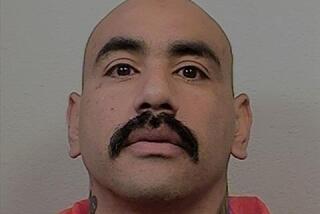Lethal Consequences of Gangs and Crack
Re “Tenacity Turns to Tragedy in South L.A.,” May 6: They were living the American dream. They represented diverse ethnic cultures; they were both formally educated professionals. They had invested in a home that was upgraded to reflect their needs and surrounded by groomed lawns and foliage.
Rodney and Vivian Murray and their children were the American dream come to fruition and, wanting it to continue, were contemplating a neighborhood change, away from the sound of gunfire and spoilage of their clean property.
Twenty-year-olds were being killed in Iraq; nothing new about that. Sean Gregory Murray -- a good student, free-spirited -- liked deep-sea fishing and had advanced to being an operating room technician in a veterinary clinic where he worked. Sean was the Murrays’ 20-year-old son. He was killed by a random act of gunfire in Los Angeles. Nothing new about that.
Ted Lepon
Los Angeles
If The Times is going to run these heart-rending stories about the destruction of neighborhoods and young lives, it should not bury the core reason for these tragedies deep in the article, where crack cocaine gets a brief mention. Crack cocaine, brought to us by an expensive and thus far futile “war on drugs,” is what fuels gangs, buys their armaments, puts them on the street.
Without the lure of drug profits, those young people would be flipping burgers or paying attention in school. Instead, well, we all read the story of the Murrays. Not the first, not the last such story.
End the war on drugs. Treatment, not prison. End the waste.
Jim Houghton
Encino


